Steelhead Fishing: Most Effective Methods And Baits
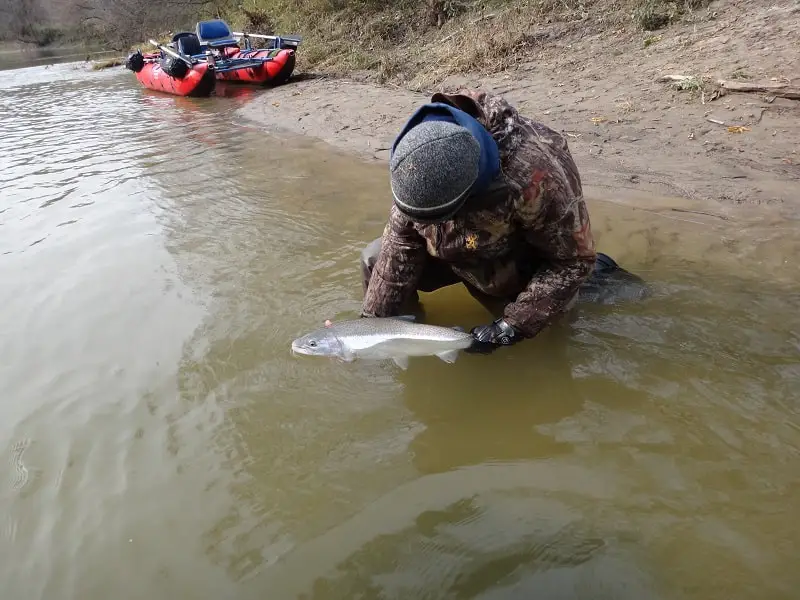
Steelhead fishing can be done using many methods, such as float fishing, fly fishing, bottom bouncing, drift fishing, lure fishing, and even trolling.
Guides might change the methods and baits based on different rivers and in different conditions, or even at different times of the year.
Top baits include Roe, Worms, Beads, Skein, Shrimp, and flies.
Top lures include Spinners, spoons, crankbaits, and plugs.
You can fish for steelhead on the Pacific West Coast or around the Great Lakes.
If you use the same proven methods that guides use, you will catch a lot more fish. I will share my guide tactics here.
Fishing East and West Coast Steelhead
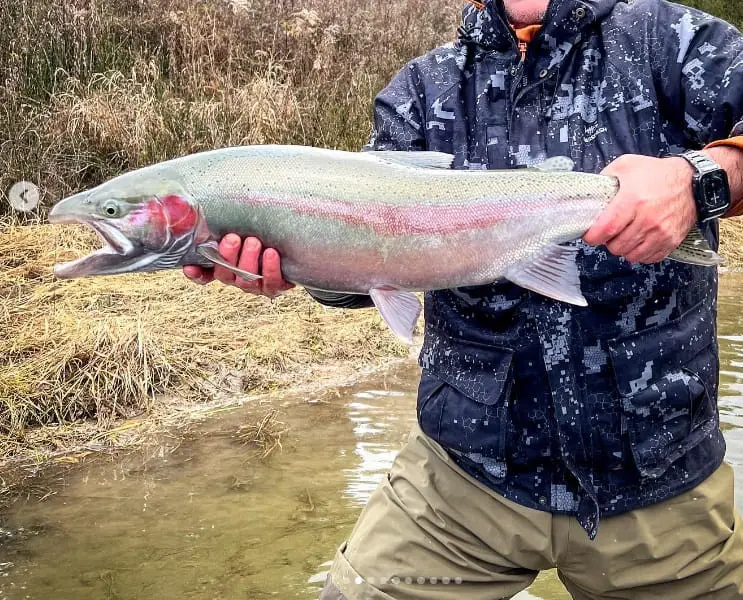
I’ve heard steelhead called the fish of 1000 casts, but in some areas, steelhead are abundant and with the right methods, baits, and skills, it’s not uncommon to catch more than 30 a day.
Steelhead are native to the west coast of North America, ranging from California to Alaska.
Steelhead have also been successfully introduced to all of the Great Lakes, which now have some of the best steelhead fishing in the world.
The Steelhead Fishery: Wild and Hatchery
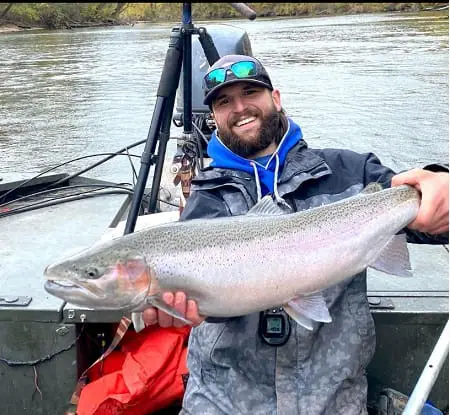
Although most areas have good natural reproduction and a good steelhead fishery, stocking programs in many states and in Canada add to the existing steelhead fishery.
In some areas, hatchery stocking is necessary and improves the dwindling populations of steelhead usually caused by overharvest and some environmental issues.
In some areas, anglers have a limited harvest or have no harvest rules on wild fish, but anglers are permitted to keep hatchery fish. Be sure to check the local fishing regulations.
River Fishing For Steelhead
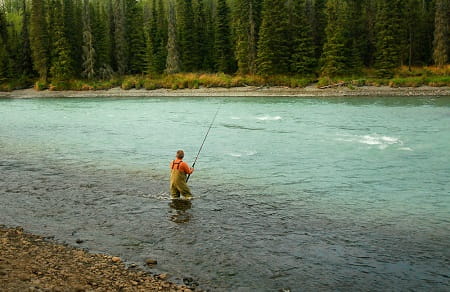
One of the most popular ways to catch steelhead is fishing for them once they enter the rivers to spawn.
Steelhead can often enter the rivers by the thousands and some will stay in the rivers for many months and this can make for some easy and exciting fishing.
When Do The Steelhead Enter Rivers – Timing The Runs
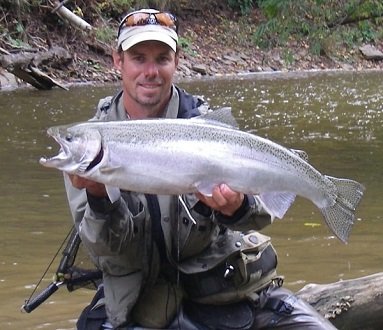
In most areas, the bulk of the steelhead will enter the rivers in late fall and in the spring. Some steelhead will also enter the river in the summer which we call summer-run fish, and some will also enter the river in the winter.
Most steelhead will spawn in the spring but some will spawn in late fall and in the winter if the conditions are right for them.
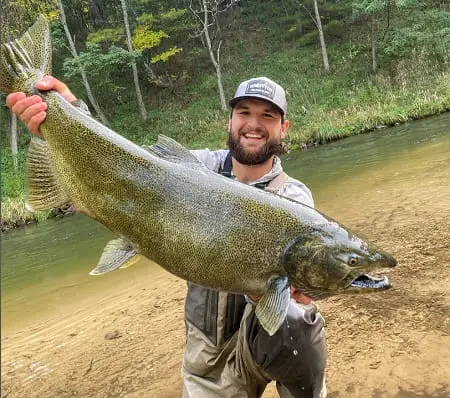
Oftentimes, water temperatures, rains, and even wind directions will trigger the steelhead runs.
In some cases, steelhead will even follow schools of salmon up the river and then gorge on their eggs. This tactic of fishing behind salmon with eggs or egg imitations can produce a lot of steelhead.
Rains Trigger Steelhead Runs
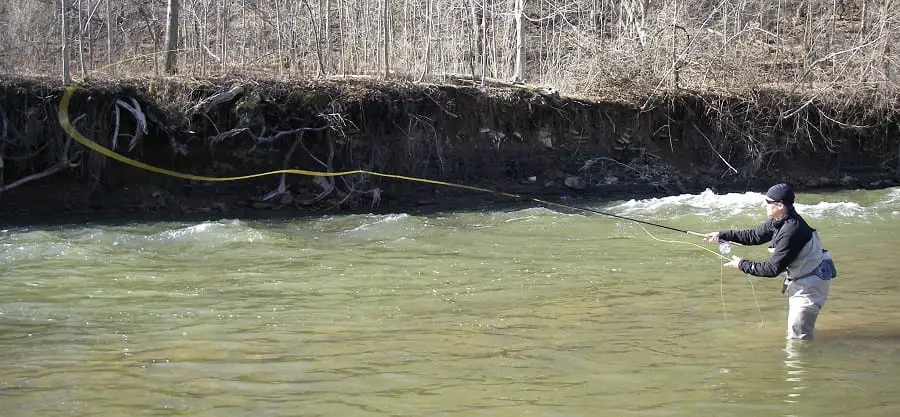
Big rains will increase water flows in the river and those heavier flows will flow further out into the lake or ocean, and as schools of stagging steelhead swim through these flows they will turn and head up the river. The higher the water the further the flow will go out into the lake and the further the current goes the more fish will find that flow and go up the river.
Many rivers also have gauges to record water levels on a website and you can look online to see if your local river water levels are high or dropping and perfect.
Temperatures Trigger Steelhead Runs
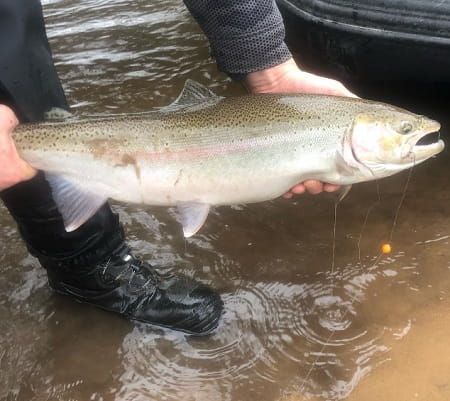
On some rivers that already have large flows even without the extra rainwater, once the river temperatures hit the desired temperature of the steelhead, the steelhead will run up the rivers based on just the temperature alone.
These rivers do not require rain to bring in fresh steelhead.
On many rivers that I fish, the temperature that starts the steelhead runs in the fall is between 55 and 60 Fahrenheit.
Wind Can Trigger Steelhead Runs
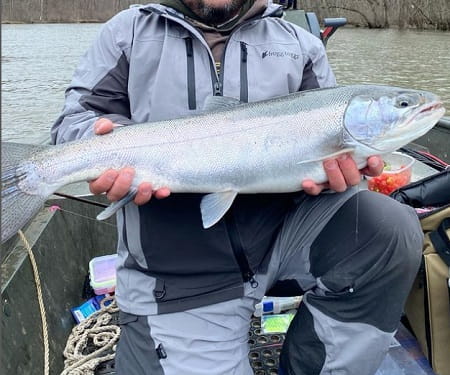
There are times when strong winds blowing into shore can push steelhead closer to the river mouth where they will swim through the current from the river that is flowing out into the lake or ocean.
When they find that current it can trigger or signal them to run up the river.
Fishing River Locations: Follow The Runs
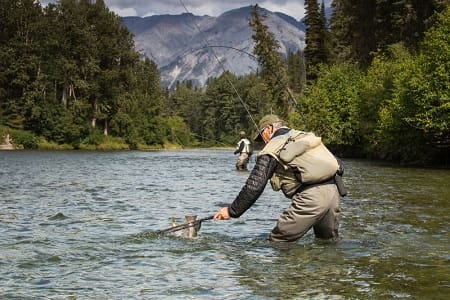
I’m about to let you in on a key secret that I and other guides use that can significantly improve your success on the river.
When I say fishing river locations, I’m not talking about where the rivers are, or the access spots.
You see, river guides and local experts will change river locations hour to hour, day to day, or week to week on the same river based on current conditions, the weather, and the stages of the run.
These experts know how to time the runs and the river conditions to maximize their success and time on the water. Doing so can be the difference between catching no fish, or catching lots of steelhead.
Not knowing how to do this well is the reason why I hear new steelhead anglers tell me they fished 20 days and haven’t caught any fish yet. Whereas I, other guides, and my buddies are catching over a hundred fish in 20 days.
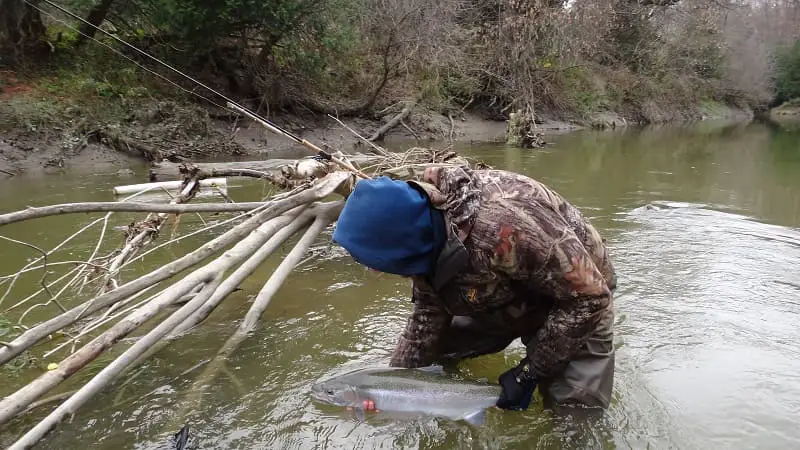
In fact, sometimes, these experienced anglers catch 20 steelhead a day or a hundred steelhead in one weekend.
What my buddies do is they time the runs based on the weather and river conditions.
And because they work five days a week, they only hit the rivers at select times when the most fish are there or when the conditions are favorable.
As a guide, I fish seven days a week for 2 or 3 months straight during steelhead season, so timing the days I fish or guide is not possible. However, like many guides, I will fish different sections of the river on different days, based on my knowledge of where the fish are or aren’t.
I call this following the runs or fishing the best waters. Let me explain.
If a steelhead run happens on Monday night, the best water to fish is near the mouth or the first 5 to 10 miles up the river.
Two days later that section of the river might be void of fish because steelhead will school and move up the river. In case you are wondering, they usually move at a slow walking speed.
So instead of fishing empty river sections, I will fish 10 to 20 miles further up the river and follow the runs.
On many rivers, the first two days after a rain, most steelhead will be in the lower 3 or 4 miles. Three and four days later, most of those fish will be further up the river, and 4 or 5 days later, they will be even further.
Fishing Dirty Water Steelhead: High Water Levels
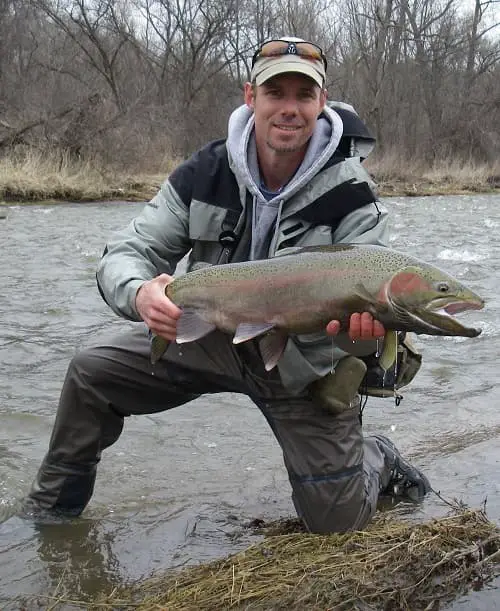
Although heavy rains often bring in lots of steelhead into the river and this is a great thing, during heavy rains, the rivers and streams can become dirty, turbulent, and even dangerous.
Dirty water also means the steelhead can’t locate your bait.
During this high dirty water time, bank anglers might have the option to fish smaller rivers that clear faster or may not have become as high and muddy, and they should.
When fishing in higher and dirtier water the key is big bright baits and lures. Lures with rattles or vibrations that can be retrieved slower are best. Big spawn bags and 4 to 6-inch pink worms or bright egg fly patterns are most productive.
I will also sometimes target the smaller tributaries of the bigger rivers that have clear water and I will fish up these tributaries.
If another river is not an option, I will often go further up into the headwaters, where the rivers tend to stay clearer and try for fish that have entered the river long ago.
I use the online USGS Stream flow charts to help me determine the best rivers to fish and water clarity and color. I discuss my methods for reading these charts at Stream Flow Data Related To Fishing.
Clear Water Steelhead
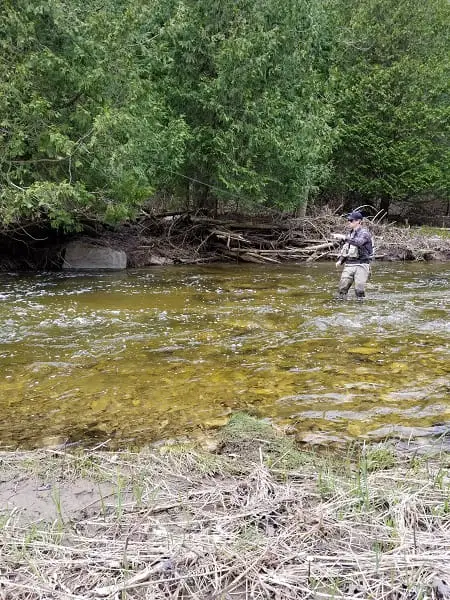
If it hasn’t rained for a week or more the rivers can become very low and very clear and this slows steelhead migrations.
Clear water streams can be difficult to fish since steelhead can detect anglers walking around the waterway. Steelhead’s eyesight is incredible during these periods, as is their ability to pick up vibrations from stumbling and heavy-footed anglers.
During these low water conditions, it’s always best to fish for steelhead in the bigger or deepest pools or in sections with structure like log jams where they will concentrate and wait for higher water before they start moving again.
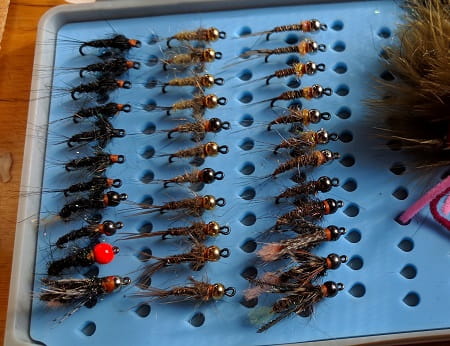
In low clear water, small baits like single eggs, beads, flies, worms, and small spawn bags are most productive.
Reading Steelhead Rivers
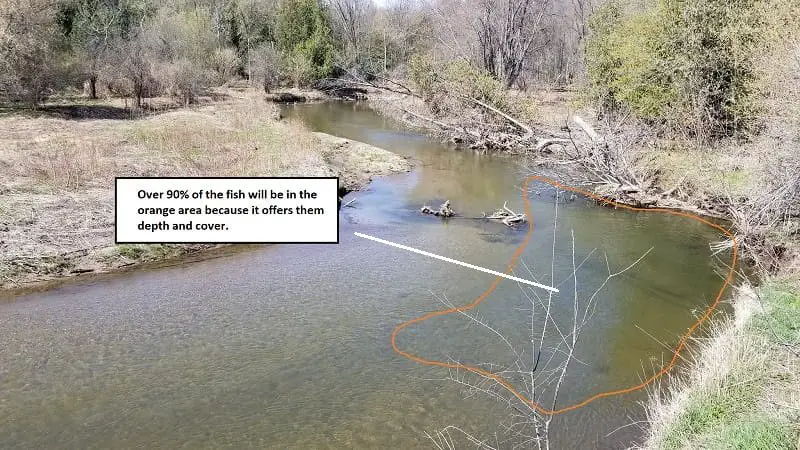
Reading the river is a skill that will enable you to find and catch more fish.
Most steelhead streams are similar with the same characteristic which include typical shallow riffles and rapids between the pools, corner pool, dams, large rocks, and even waterfalls make it easy to figure out where the steelhead will be holding.
These types of rivers are easy rivers to read and easier to determine where the steelhead will be.
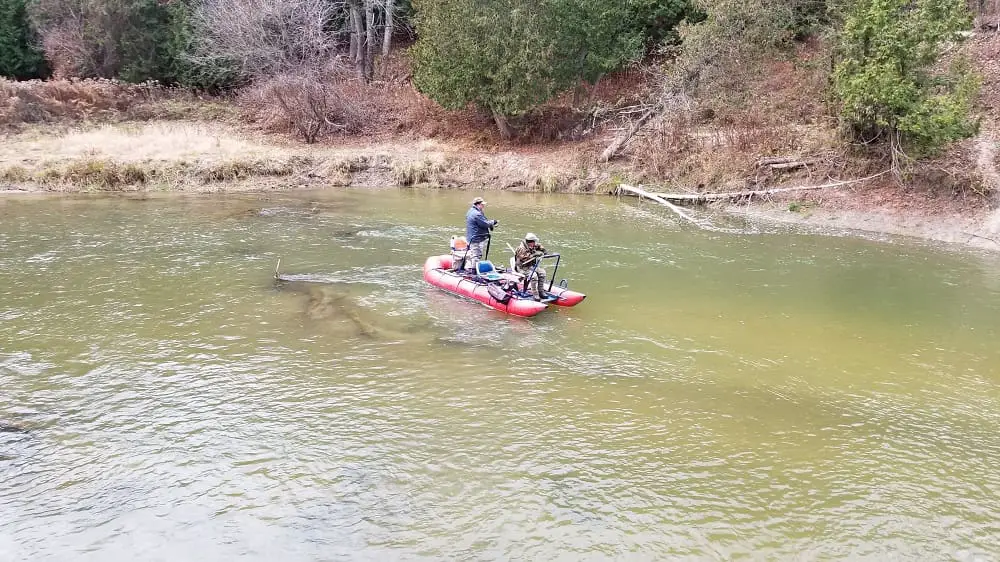
Steelhead will generally look for deeper water whenever possible and unless they are spawning they won’t stay in shallow water under 2 feet deep for long.
Deeper riffles and rapids 3 feet deep or more can be good spots. Deeper pockets in front or behind rocks can also be good especially if the fish are working their way up the river.
Pools are the easiest water to read and are often where the most fish will be. Or at least the most feeding fish.
The steelhead will often move quickly up through the shallow rapids and then rest in the pools before they traverse the next set of riffles and rapids.
When fishing the pools, look for feeding lanes, or bubble lines. and current seams. These areas concentrate food and steelhead and allow them to get out of the fastest water.
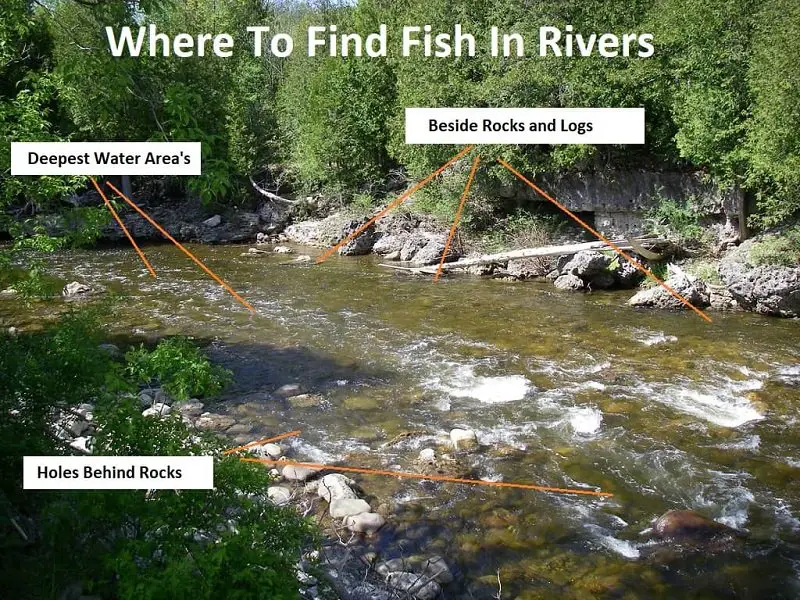
In the coldest months of January and February, the steelhead will be in the deepest part of the pool, or the slowest part of the pool.
This is often in the middle of the pool or near the tail of the pool, which is often called the tail-out.
During the spring and fall runs, the steelhead will move from the tail-out section and closer to the top of the pool known as the head of the pool. They will often rest for a short time at the head of the pool before moving up and into the next riffle.
Fishing Steelhead Through The Seasons
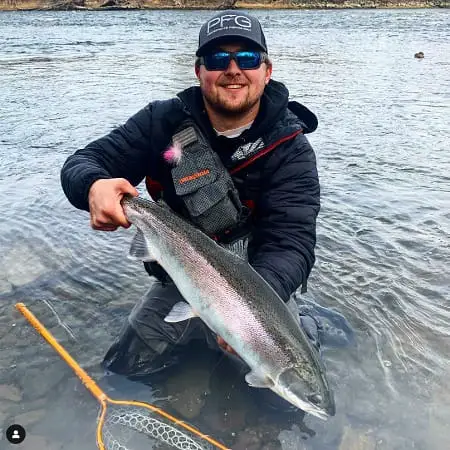
Steelhead can enter rivers 12 months of the year.
Spring, fall and winter can be fantastic times to be fishing for steelhead.
In some areas, the summer fishing can be good with steelhead summer runs.
Spring Fishing For Steelhead
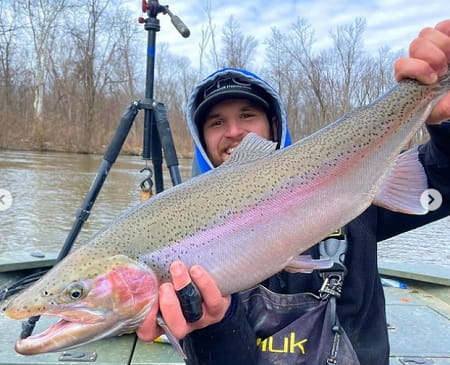
Many steelhead enter the rivers in the spring just as the ice melts and the river temperatures start to warm.
There are three stages to the spring steelhead run, and I fish each stage differently to ensure the most fish.
I discuss spring fishing for steelhead in detail on my page Spring Fishing For Steelhead: Tips And Tactics From The Guides.
Fall Fishing For Steelhead
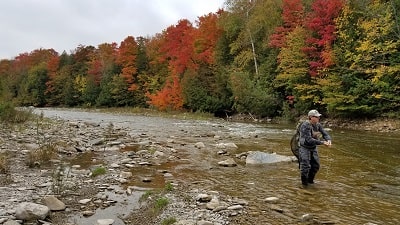
The fall has more stable river conditions and predictable runs, and the steelhead are big and strong. They also tend to be aggressive, feed readily, and fight the hardest.
Understanding how to fish during these changing times can put a lot more steelhead in your net. To find out more, see Fall Fishing for Steelhead: Proven Guide Tips And Tactics.
Fall steelhead will often start showing up in October and peak in November and December.
Fishing Winter Steelhead
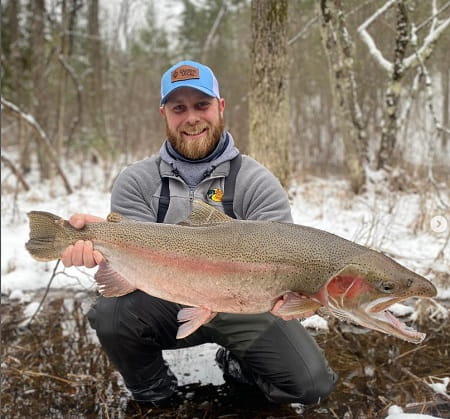
Winter is tough for most anglers, but many steelhead will have entered the river in late fall, so there is usually plenty of steelhead around if you know how to fish for them.
Winter fishing means few anglers and possible solitude, with some scattered winter runs of steelhead if the conditions are suitable.
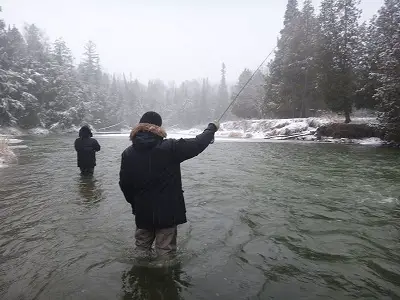
Winter steelhead requires anglers to fish slower and deeper, and to find areas that winter steelhead will hold. You may also need to fish smaller baits and lures since winter steelhead will be less aggressive.
Winter steelhead anglers will also need to pick their fishing times more carefully and fish select days when the weather, water temps, and air temps are more suitable for feeding fish.
I discuss this in detail on my page Winter Fishing Steelhead Tactics and Tips From Guides.
Fishing For Summer Steelhead
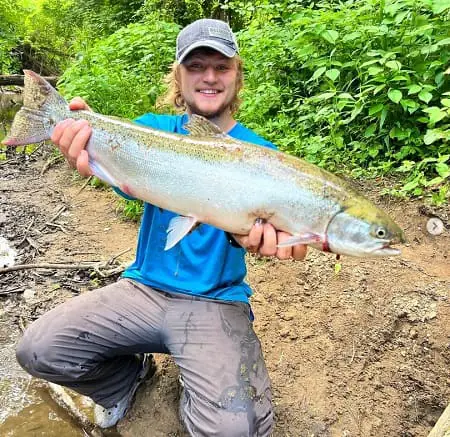
In some areas, summer fishing in the rivers is possible due to a natural summer run steelhead and a special summer steelhead fish species known as a Skamania.
On the West Coast, summer run steelhead can be fantastic, with summer steelhead entering the rivers starting in July, through August, and into the fall.
Late August to mid-September are peak times, with most summer steelhead in the rivers by late October or November.
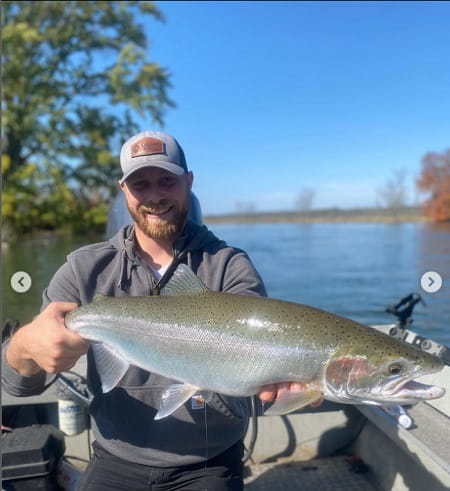
Since they are often in the river when the salmon are spawning, salmon eggs and nymphs can be great baits.
Casting spinners and spoons and crankbaits are also very effective.
For more, check out Fishing For Summer Steelhead.
Fishing Methods: How To Catch Steelhead
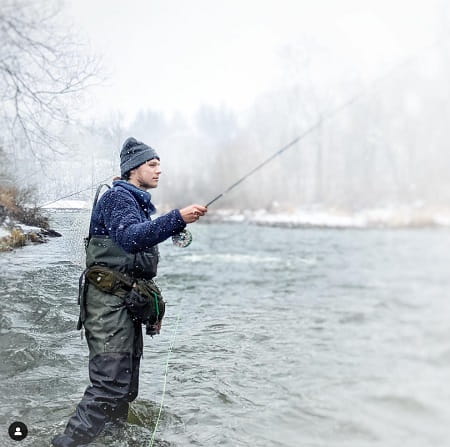
There are four primary methods used to catch steelhead in rivers.
- Float fishing
- Drift fishing
- Fly fishing
- Lure Fishing
Float Fishing For Steelhead In Rivers
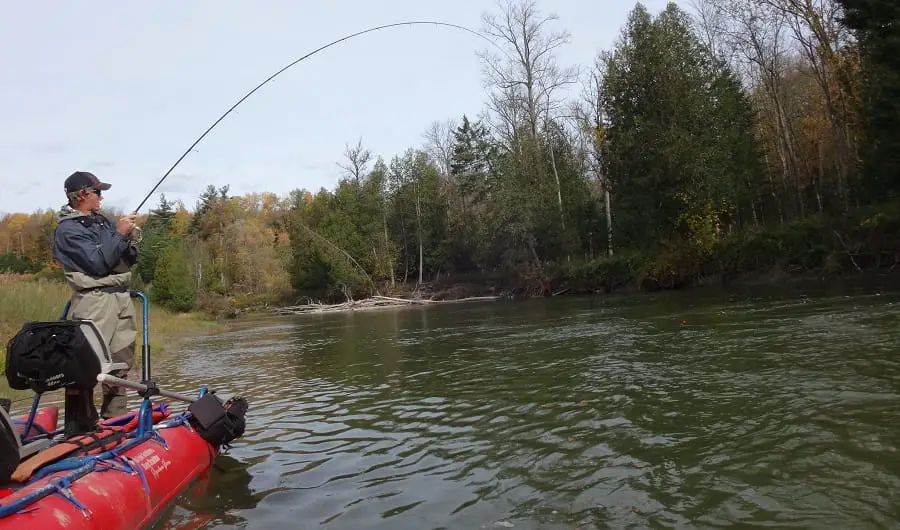
Float fishing for steelhead simply means you are presenting a bait below a bobber, which is more commonly called a float by river anglers. You drift your float and your bait down the river to the fish in the most natural way possible.
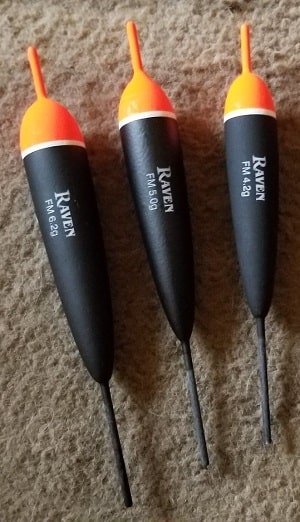
The float suspends your bait and weight just off the bottom and keeps it in the strike zone longer.
I discuss the best methods for float fishing on my page Float Fishing For Steelhead – A River Guides Advice.
Spin Fishing For Steelhead In Rivers
Spinning rod fishing is popular everywhere that guys fish for steelhead. With a spinning reel and a spinning rod, you can do all fishing methods including trolling and drift fishing from a riverboat.
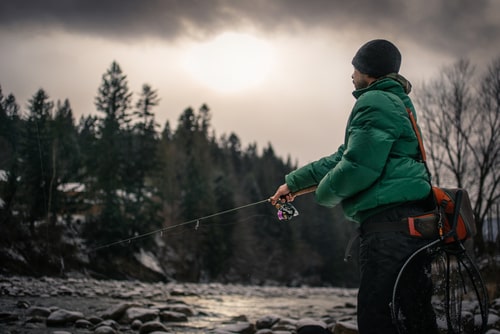
When spin fishing for steelhead, you want a reel that has a good smooth drag system, good bearings, and a spool that can hold a lot of line.
I discuss the best spinning reels for float fishing, lure fishing, or drift fishing on my page Best Spinning Reels.
I also like long medium or medium heavy rods from 8 to 10 feet for casting lures, and I prefer medium light rods from 11 to 14 feet for float fishing. A good rod for both casting lures and float fishing would be between 9 and 11 feet. Check out Best River Fishing Rods Of 2021: Trout And Steelhead Rods.
Check my page on Spin Fishing For Steelhead for full details, my tactics, and tips for catching more steelhead with spinning reels.
Centerpin Fishing For Steelhead In Rivers
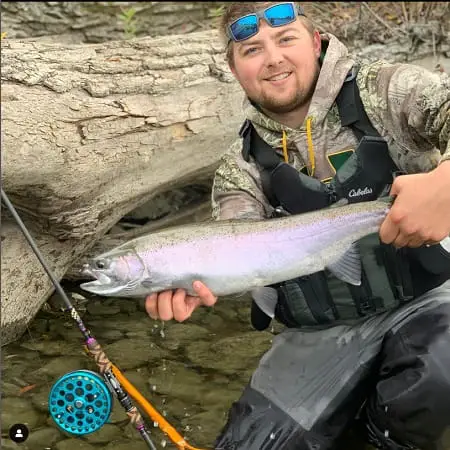
I have been Centerpin fishing for over 30 years, and I have been guiding and teaching anglers how to Centerpin fish for steelhead for about 20 years. I can honestly say that in most rivers, Centerpin fishing is by far the best method for catching steelhead in rivers.
Centerpin fishing is simply using a large round reel that looks like a fly reel, but it holds the mono or braided line and has no drag. The Centerpin reel free spools and it’s designed to drift a float with a bait down the river. The free spool of the reel and the smoothness of the reel allow for the best possible presentation of the bait.
I discuss the setup, the leaders, the baits, and how to present the bait, and more on my page Centerpin Fishing For Beginners: 20 Steps From A Top Guide..
Fly Fishing For Steelhead
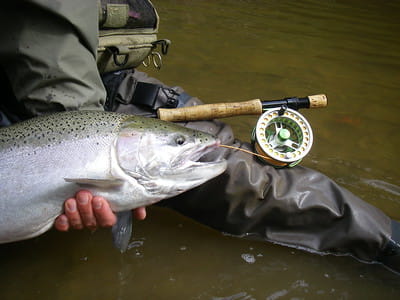
Fly fishing for steelhead is my preferred method because I find it more challenging than some of the other methods and because it’s fun.
Fly fishing for steelhead can be done using four different methods of fly fishing, which include Nymph Fishing, Streamer fishing, Spey fishing, and even Euro Nymphing.
I discuss each of these fly fishing methods and how to do them as well as the best setup, leaders, flies, and more, on my page Fly Fishing For Steelhead: Great Lakes Style.
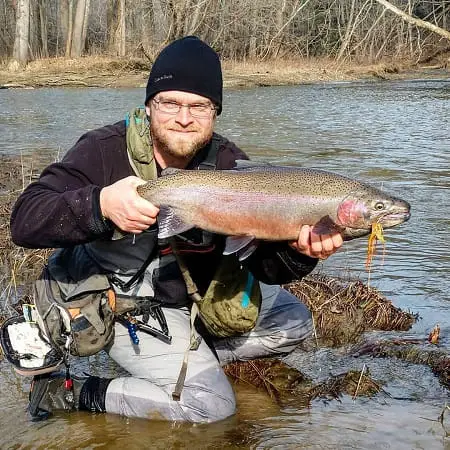
With fly fishing, the flies can imitate salmon eggs, nymphs, and baitfish. Drifting a combo nymph and eggs setup is hard to beat anywhere steelhead exists.
With fly fishing, a rod of 9 to 11 feet is used with a 10-foot fly rod in the 7 to 8 weight range being the best rod size.
Drift Fishing For Steelhead
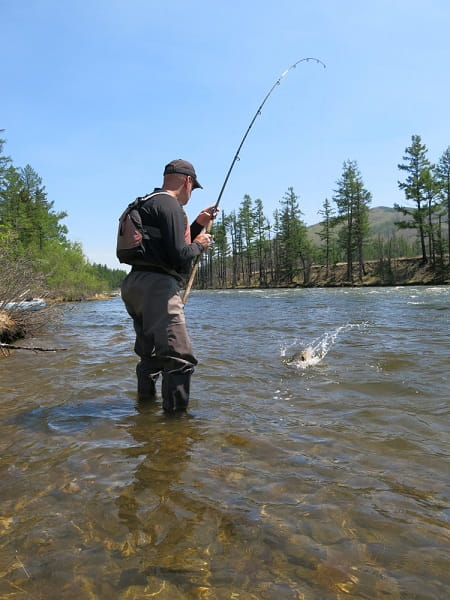
Drift Fishing for steelhead is primarily done from the river bank or while wading, but it can also be done from a boat.
With drift fishing, you have weights on the line and a leader, and a bait or two. You only use just enough weights to get your bait down and ticking along the bottom.
The advantage of drift fishing is it works well in deeper water depths from 5 to 30 feet deep and in medium to fast currents.
The tricky part is that for new anglers, it can be difficult to detect a bite or to tell the difference between a bite and the bottom.
I discuss steelhead drift fishing in detail and show you guide leader setups and best baits on my page Drift Fishing For Steelhead: A Complete Guide.
Bottom Bouncing For Steelhead In Rivers
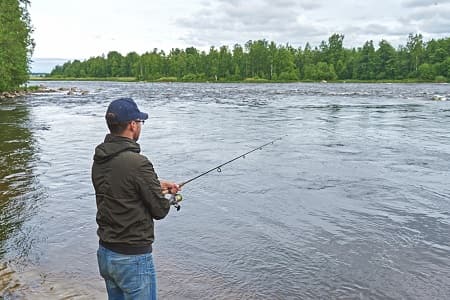
Bottom bouncing is an old-school method that anglers use to catch steelhead.
However, bottom bouncing can be the most effective method in smaller shallower rivers and creeks and in pocket water. It can also be very effective for trout and for salmon.
I have also made the old style of bottom bouncing much more effective than it ever has before using what I call advanced bottom bouncing, which you can see on my page Bottom Bouncing – 5 Proven Guide Tips For More Fish.
Plunking For Steelhead
Plunking is a still fishing method that is common with river anglers and lake/ocean shore anglers. At times, it can be a very effective fishing method and is worth checking out.
With plunking, you use a large heavy weight that can be cast out far and anchors a floating bait rig to the bottom. The weight sits on the bottom while the bait can be set to float 1 to 5 feet off the bottom.
The angler then sits and waits for a steelhead to swim by and grab the bait.
For more on Plunking, including the best plunking setup and best baits, check out Plunking For Steelhead: A Complete Guide.
Bobber Fishing Steelhead: Bobber Doggin Method
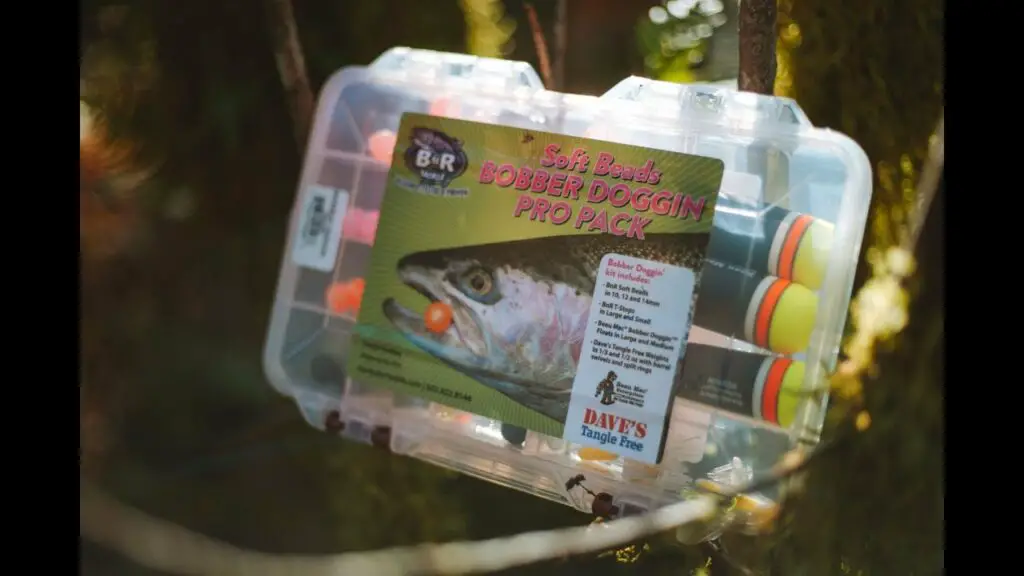
With Bobber Doggin, your weight drags and bounces along the bottom which keeps the bait in the strike zone and slows the bait down.
I discuss the methods in more detail, show you the setup, and give you my honest opinion on it. See my article Bobber Doggin For Steelhead, Salmon, and Trout: A Complete Guide.
Other fishing methods for steelhead include:
Baits For Steelhead
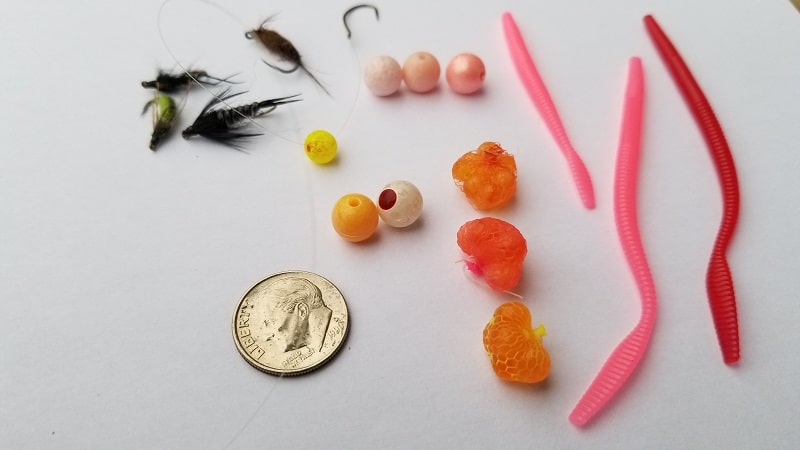
All of the above methods require the use of baits.
Eggs For Steelhead Bait
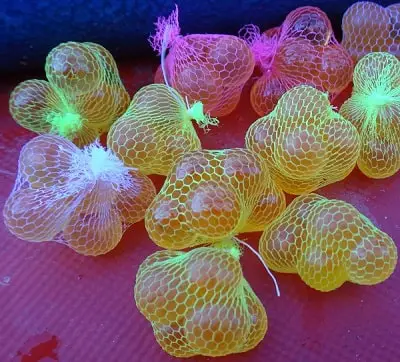
The most common bait for steelhead anglers anywhere you fish for steelhead are salmon eggs or trout eggs, which are also known as spawn, roe, spawn bags, skien, egg sacs, or skein.
Check out Spawn Bags – Guide Secrets For More Trout And Steelhead
Trout and Steelhead Beads
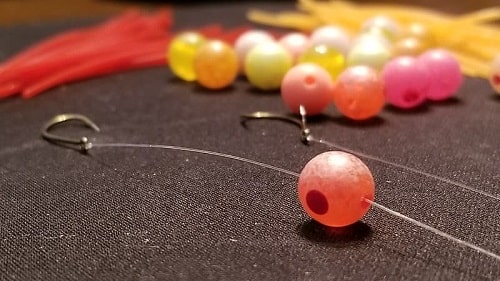
Soft and hard beads in multiple colors and sizes have been very effective anywhere you fish steelhead, and steelhead anglers are catching on to this hot bait.
Soft plastic beads work, but many anglers prefer the hard plastic, glass, or stone beads.
See Fishing With Beads: 5 Guide Tips For More Fish
Worms Are Great For Steelhead
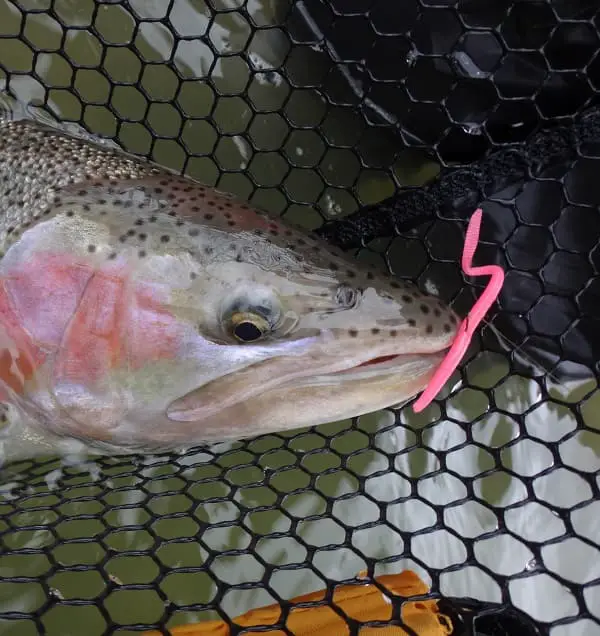
Whether you use giant dewworms or live garden worms, or you are like me and prefer to use the soft plastic steelhead worms in pink, red, and brown, worms can often be the most effective bait in all types of rivers.
Check Out Fishing With Worms For Trout and Steelhead: 10 Guide Tips.
Soft Plastics
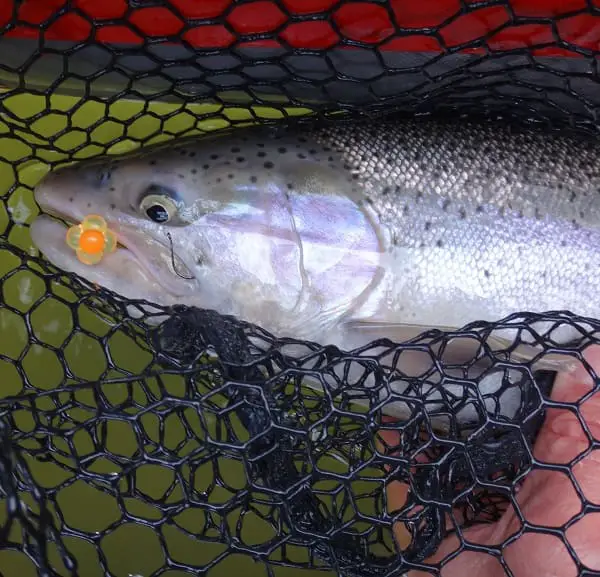
Soft plastics baits can include egg clusters, worms, grubs, or insects like nymphs and creature-type baits and they can all work at times and in different types of river conditions.
Flies For Steelhead
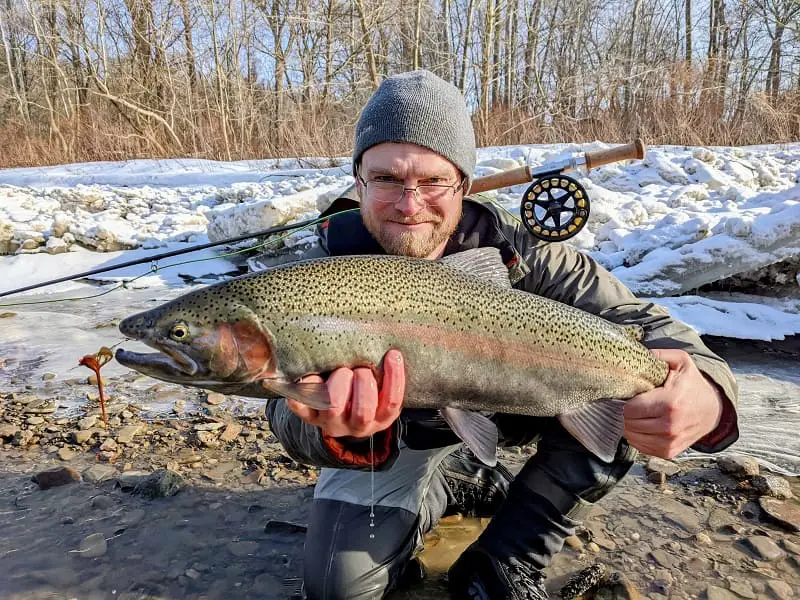
Artificial flies like those used by fly anglers can also be used with all the bait fishing techniques, and it is highly recommended that anglers have some effective fly patterns with them.
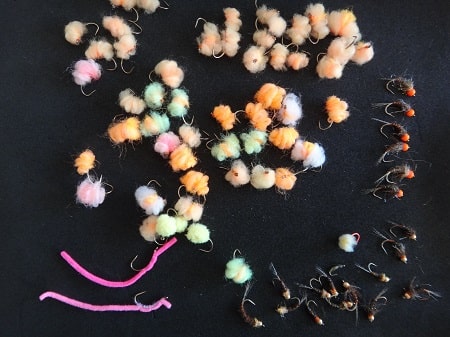
Fly fishing anglers know that flies like mayflies, stoneflies, and caddis larva nymphs can be very effective when other baits are not productive.
Fly anglers will also do very well on egg patterns, small streamer flies, large streamers, and spey flies.
Check out, 19 Best Flies For Steelhead: Most Effective Guide Flies
Other Effective Baits
I discuss the 11 best and most effective steelhead baits, how to set them up, and how to fish them with guide tips to make them even more effective.
Lure Fishing For Steelhead In Rivers
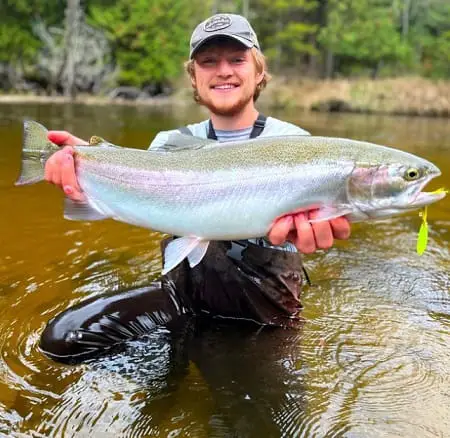
Casting lures can be exciting, and it can provide steelhead anglers the opportunity to have hard hits and multiple steelhead.
Lure fishing can be done effectively from the river banks for migrating steelhead, from the shoreline of the lake or ocean, and from the pier of the river mouths.
Most lure fishing is done using a spinning rod and reel but a baitcasting reel will also work well.
Effective lures for steelhead include:
- Spinners – Spinners work in all types of waters, current speeds, and depths and are a favorite of many anglers and guides.
- Spoons – heavy casting spoons in the 3 to 4-inch size and in bright colors work best. Spoons are good from shore and in rivers.
- Crankbaits – Crankbaits like a Rapala with a deep or medium diving lip are often best for more steelhead rivers.
- Plugs – There are some lures known as plugs that are very effective especially in slower water or at certain times of the year. plugs like the Kwickfish and Flatfish are favorites of mine and other guides.
- Jigs – Not always considered a steelhead lure but jigs can be fished below a float or twitched, and they can be very effective.
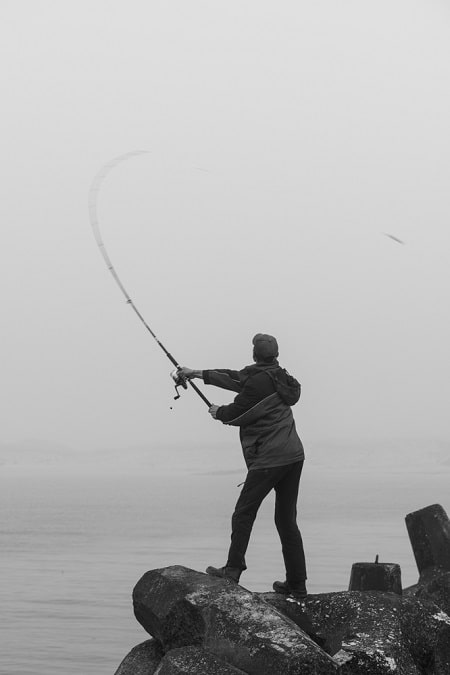
All lures will work on West Coast and Great Lakes steelhead, and I discuss how to fish lures on my page Steelhead Lure Fishing Tactics and Guide Tips.
Jig Fishing Steelhead: And Best Steelhead Jigs
Jigs can be used as a bait and drifted under a float or they can be cast out and jigged or twitched in to resemble baitfish that feeding steelhead love to eat.
Jigs will work with West Coast and Great Lakes steelhead, and I discuss the best jig fishing techniques, best steelhead jigs, best sizes, and best colors on my page Jig Fish Guide For Steelhead.
Ocean, And Lake Fishing For Steelhead
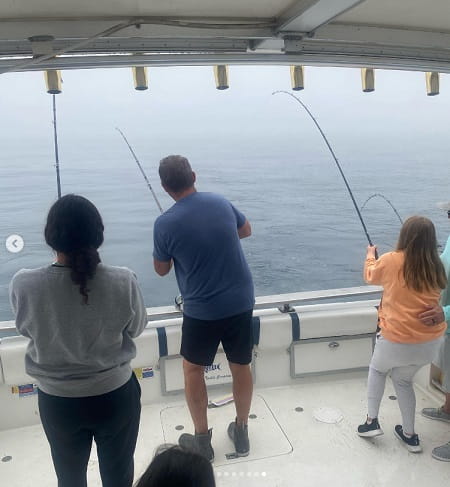
There are certain times of the year, primarily in the summer months, when most steelhead will be out in deep water feeding on baitfish.
Steelhead anglers will target steelhead in the lake and ocean from a boat using specialized equipment and lures.
Boat Fishing For Steelhead
Ctahcing steelhear from a motorboat is a method that anglers use on bigger rivers and lakes and oceans. Boat fishing consists of three methods, Anchor fishing, Backtrolling, and Trolling
Trolling for Steelhead
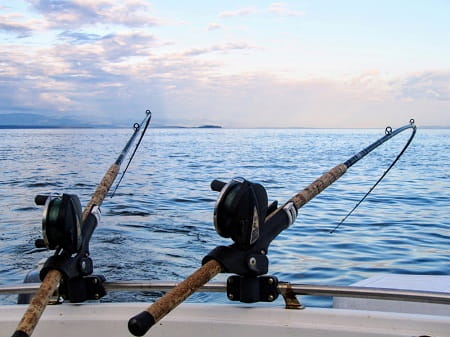
Trolling is the primary method for catching steelhead in the Ocean or the Great Lakes.
Most steelhead anglers trolling will use Sonar or Fish Finders to locate steelhead of the schools of bait the steelhead feed on and then use Downriggers or Dipsy Divers to get their lures down to that depth.
If you are going to be fishing open water steelhead, you will need a suitable fish finder with GPS.. See: 11 Best Fish Finders: Review And Buyers Guide
Spoons, crankbaits, and plugs are go-to lures when trolling.
Back Trolling For Steelhead
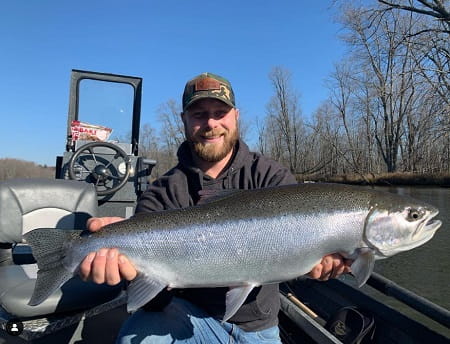
Back trolling for steelhead is when you let your lures out the back of a boat far enough that they get 3 to 5 feet off the river bottom, and then you allow the boat to slowly drift backward down the river, with the hope that you drop your lures in front of feeding steelhead.
This is often done with motor boats, or with a trolling motor and is often best done in deeper water over 5 feet deep.
Anchor Fishing For Steelhead
Anchor fishing for steelhead is often done on large steelhead rivers out of a motor boat. The idea of the method is to anchor the boat with the nose of the boat upriver and let lures drift back towards the steelhead.
Once the lures have achieved the proper depth, which is often a few feet over the river bottom, the lure is held in place and the angler simply waits for a migrating steelhead to grab it. Often, anchor fishing is best in deeper water of 6 feet or more.
Anchor fishing can be dangerous in swift currents and should only be done by experienced anglers. The danger involves the possibility of the anchor rope wrapping around the prop and spinning the boat so the motor is upriver, which can cause the back of the boat to be pulled under the water.
Steelhead Side Drift Fishing
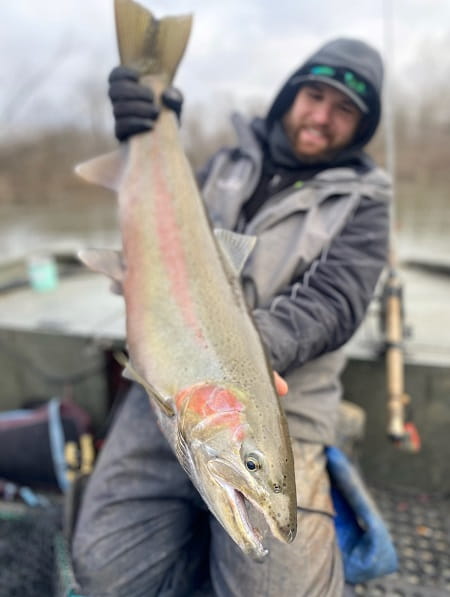
Steelhead side drift fishing from a boat is a very effective and common method used by anglers, and it can be done on medium to very large rivers and can be done from most boats.
Drift fishing generally starts with the angler positioning the boat upriver of a section of river, and then slowly drifting the boat downriver and past the fish while presenting a bait, or while casting lures.
The traditional method is using a weight and bait lowered over the side of the boat. The bait is kept 2 to 4 feet off the bottom and the weight ticks along the bottom as the boat and rig drift down the river.
Guide Tip: Catch More Steelhead
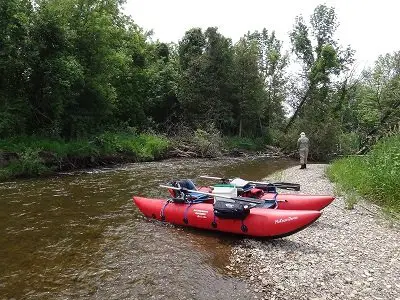
Fishing steelhead along many rivers can mean crowds, and many anglers fishing in the same area can make the steelhead go lockjaw and stop eating, but a boat gets you away from the crowds and into more steelhead.
I use 1 to 3-man pontoon-style boats that range from under 30 pounds to about 130 pounds, which enable me to get far away from the crowd or get me into sections of the river that flow through private property where nobody else can fish.
You can do this easily and cheaply and I will tell you how.
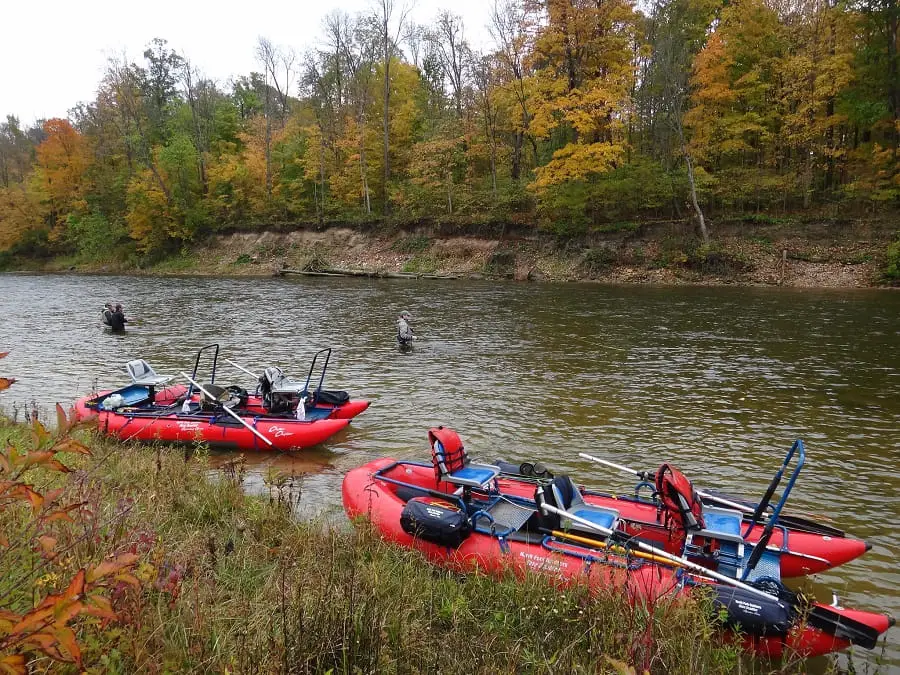
To see how I do this and all the ways to do it easily with 1 or 2 anglers and to see the best boats for this, check out my page on River Boats For More Fish.
Shore Fishing And Pier Fishing For Steelhead
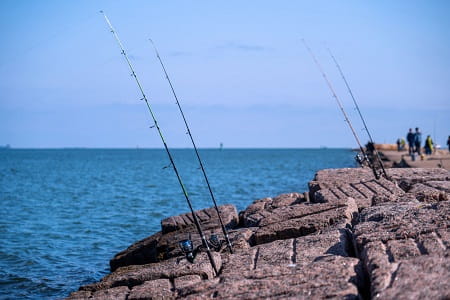
Pier fishing is popular with anglers because this is where you have the opportunity to catch large fish that are full of energy and are at their strongest.
Lure and bait fishing are the prominent methods when shore and pier fishing.
Steelhead By Area: West To East
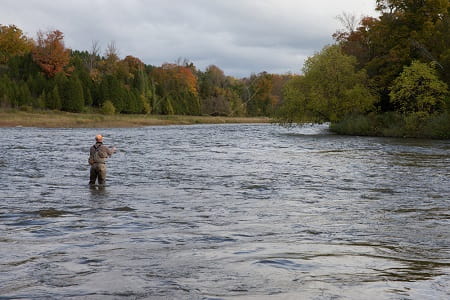
If you want to target steelhead, I have found that the methods, the baits, and the gear used on the West Coast can be slightly different than they are in the Great Lakes region.
Although the differences are often minor, popular methods used on the West Coast can still work on the Great Lakes, and vice-versa.
Steelhead Tackle
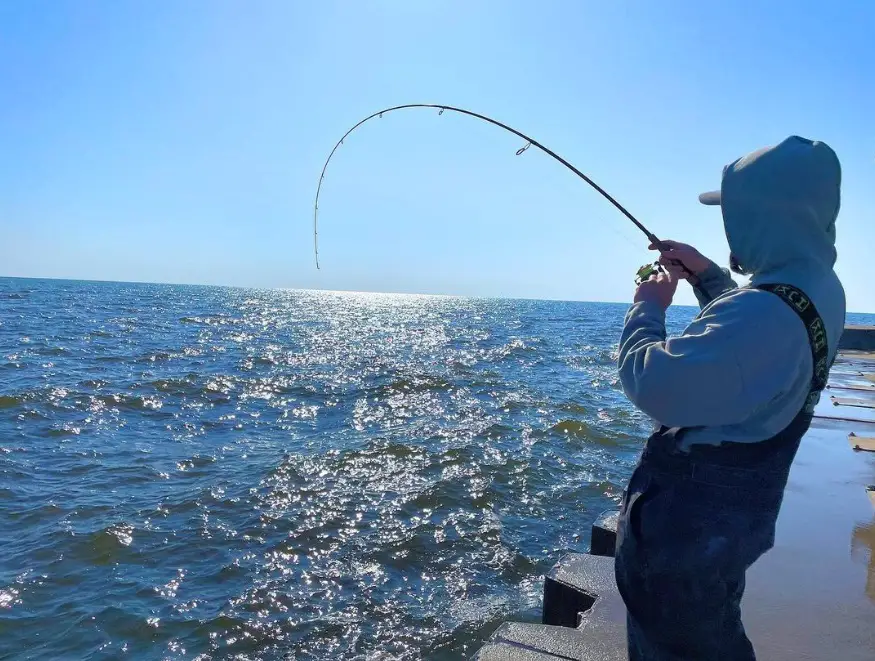
The rod, reel, and line size will depend on the river size and the fish.
The steelhead gear, such as the rod and reel, will also depend on the method used.
When float fishing, many anglers will use rods between 11 and 14 feet long. When casting lures, many anglers prefer rods from 7’6 to 9’6″.
In general, large West Coast rivers require a heavier spinning rod and reel or a float or fly rod that’s suitable for the big water, as well as bigger lines and bigger hooks. Bigger lines and leaders are most important.
As an example, I will use an 8-pound leader on a Great Lakes river and rarely break fish off, and I won’t need a super heavy rod because the leader is not that strong.
However, a fast-flowing big west coast river will require a 10 to 14-pound leader and a heavier rod that can handle the heavier leader and stronger fish.
Check out:
- What Pound Test Leader Is Best For Steelhead?
- 5 Most Effective Float Fishing Leader Setups Used By Pro River Guides
- 5 Best Rigs For Steelhead
For this reason, I have articles for each state and province where steelhead are found and I discuss proper gear.
Steelhead Gear:
- Rod
- Reel
- Line
- Fluorocarbon leader
- Waders
- Vest or a pack
- Wading net
- Forceps
- Knippers
See my article River Fishing Gear: Everything You Need To Succeed.
Where To Catch Steelhead
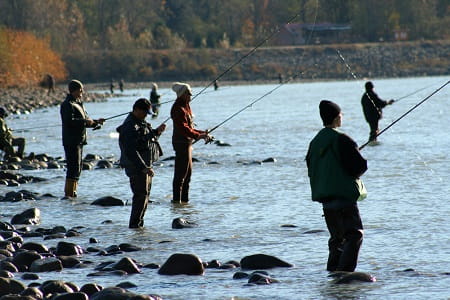
Check out the steelhead information for your areas.
- Fishing California Steelhead – Northern California has good opportunities for wild and stocked steelhead with decent public access on many rivers.
- Fishing Oregon Steelhead – Oregon has plenty of wild and hatchery steelhead rivers with both summer and winter steelhead and good access. Not to mention fantastic scenery and some of the best steelhead rivers in the world.
- Fishing Idaho Steelhead – Idaho fishing on famous rivers like the Salmon River and the Snake River can be fantastic.
- Fishing Washington Steelhead – Washington has some great steelhead riverd and some excellent steelhead and salmon fishing.
- Fishing British Columbia Steelhead – Arguallble the best summer fishing steelhead rivers in the world, with plenty of large and small rivers with both summer and winter steelhead and plenty of public access.
- Fishing For Alaska Steelhead – Get here early since steelhead run in Alaska earlier than other rivers due to the extremely cold temps.
- Fishing For Wisconsin Steelhead – Coming Soon
- Fishing for Ontario Steelhead – Ontario Canada has more shoreline and steelhead rivers than any of the great lakes states. With days over 30 steelhead its worth checking out.
- Steelhead Fishin In Indiana – Coming Soon
- Fishing Michigan Steelhead – Lake Michigan and Michigan tributaries might be considered the best steelhead fishing in the east with lots of steelhead, tons of public access, combined with many fish species like chinook, coho, lake run browns, and Skamania.
- Fishing Ohio Steelhead – A great stocking program in Ohio allows anglers the opportunity to have days of over 50 steelhead with many in the 3 to 6-pound range.
- Pennsylvania’s Best Fishing For Steelhead – Similar to Ohio, Pennsylvania has many small rivers that get a huge annual run of steelhead that concentrate the fish so much that days of over 30 steelhead are possible,
- New York: Fishing Steelhead – Some famous steelhead rivers, like the Niagara River and the Salmon River, are found in the state of New York. Many other rivers in the area also get a big annual runs of steelhead.
Fishing License, Tags, Permits, and Regulations
Because of the wide distribution of steelhead, it is best to check the local fishing regulations and even specific river regulations or restrictions before you fish.
If you would like more details and want to read the full version of this article, see it HERE.
If you have a question or comments, let us know in the comment section below.
Tight Lines
Graham
Resources:
Steelhead Study Results in Several Interesting Conclusions
Steelhead declines spur discussion of research and management options – Michigan Sea Grant (msu.edu)

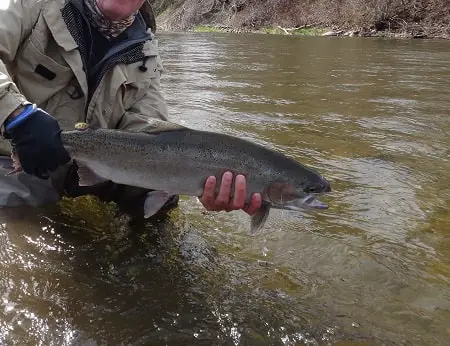
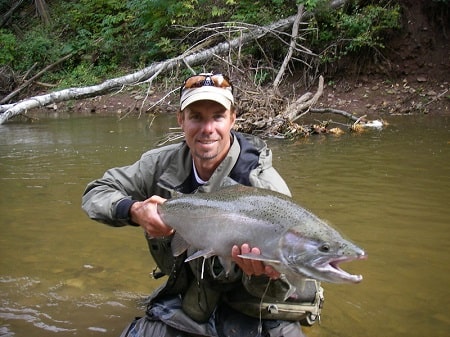
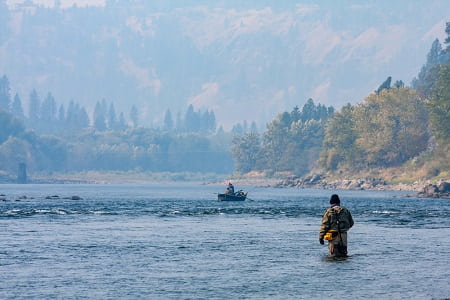
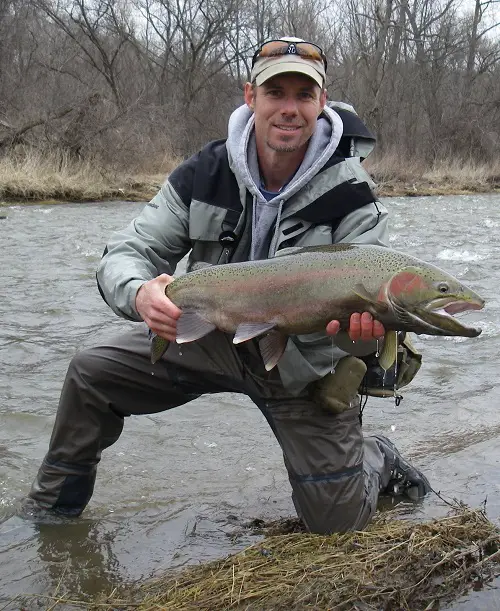
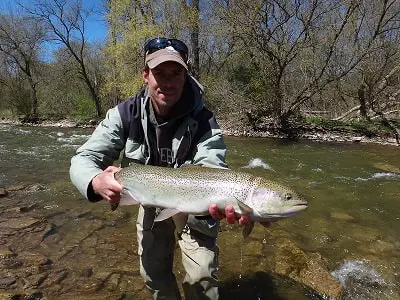
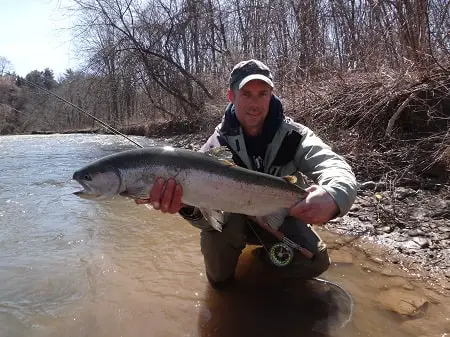
A friend claims a few drops of anise extract on an egg sack helps attract steelhead- what do you think ??
It is very possible, steelhead are curious animals and if they pick up on a scent it could bring them in from a further distance to investigate, and then when they see the bait they might put it in their mouth. But to be honest with you I’ve tried all kinds of homemade and commercial scents and I haven’t found one that I thought made any real difference. If a scent gives you more confidence, then go for it.
Graham
I am reading all of your articles on troutandsteelhead.net and was wondering if you can use some or all of these techniques from a boat. Thank you.
I guide and fish from drift boats and rafts all the time and I use these methods from the boat. All the boat does is enable you to be in a position that you can fish better or be nearer to the steelhead.
However, there might be situations that might make fishing from the boat more difficult in which case just change tactics to one that can work.
I will likely do an article on “Fishing Rivers From a Boat” this year.
Hope that helps,
Good luck.
Hey Graham,
When you come up to a run, how many setups would you fish it with before relocating. And what would be your go to lures and baits in the order you would rank them when hitting a run.
Thanks!
Kenny
Hi Kenny,
I don’t normally use multiple setups in the same spot unless I feel I can not get the proper or the needed presentation with just one setup, in which case I will change to 1 other setup.
I will change setups depending on each spot and what would work best in that spot. As example, on a long deeper slower pool, I would go with a float or indicator method, but in shallow faster runs or pocket water, I would use bottom bouncing or Euro nymphing.
Hope that helps
Graham,